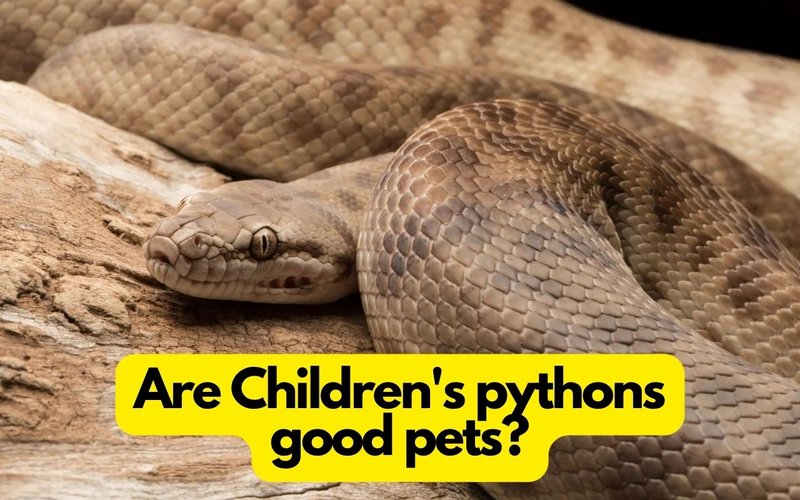
Imagine holding a living treasure in your hands. That’s what a ball python can feel like. With their beautiful patterns and calm demeanor, they offer a different kind of companionship compared to your typical pet. But before you rush out to adopt one, let’s explore whether ball pythons truly make good pets for kids and what you need to know to ensure a happy home for both your little ones and your new snake.
Understanding Ball Pythons
Ball pythons, also known as Python regius, are small to medium-sized snakes native to Africa. They typically grow to about 3 to 5 feet in length, making them manageable for kids. One of the main reasons they’re popular as pets is their docile nature. They’re known for being pretty chill, which is honestly a huge plus when you have kids around—less chance of a wild snake escape during handling!
These pythons come in various colors and patterns, thanks to selective breeding. You might spot some in vibrant hues or with unique markings; each one is like a tiny piece of art. Watching them move can be mesmerizing, almost like observing a slow, graceful dance. Kids often find it captivating, sparking curiosity about nature and wildlife.
Are They Safe for Kids?
Safety is probably one of the first things you’re thinking about when considering a ball python as a pet for kids. Generally, ball pythons are non-venomous and are among the most harmless snakes you can find. They prefer to curl up in a ball (hence the name) when they’re scared, rather than attack. This makes them less likely to bite compared to other snakes. However, it’s important to teach children how to handle them properly.
Supervision is key. When kids interact with the snake, make sure an adult is always there to guide them. It’s essential to show them how to hold the snake gently and not to startle it. And of course, washing hands after handling is a good habit to establish, keeping both your kids and the snake healthy.
Teaching Responsibility with a Ball Python
Having a pet, regardless of type, is a big responsibility. A ball python can be an excellent way to teach kids about caring for an animal. They need a proper habitat, a balanced diet, and regular health checks. Setting up a snake enclosure can be a fun project for the family, integrating learning about biology and responsibility.
Kids can help with feeding (usually frozen mice, which can be a bit of a shock at first) and cleaning the habitat. Involving them in these tasks can foster a sense of pride and accountability. They learn that their actions directly affect the snake’s well-being. Plus, it encourages empathy toward all living creatures.
The Basics of Ball Python Care
Caring for a ball python isn’t overly complicated, but it does require commitment. First, you need a proper enclosure—something secure and spacious enough so they can stretch out. A tank of around 40 gallons usually works great for an adult ball python.
Here are a few care basics to keep in mind:
- Temperature Control: Maintain a warm side (about 80-85°F) and a cooler side (around 75-80°F) in the tank.
- Humidity Levels: Aim for humidity levels between 40-60% to help with shedding and overall health.
- Feeding: Generally, feed them every 1-2 weeks, depending on their size.
- Substrate: Use safe materials like aspen shavings or paper towels for bedding.
Regular vet check-ups are also recommended, especially for kids who might accidentally stress out the snake with improper handling. It’s all part of the learning experience!
Common Concerns Parents Might Have
You might be wondering about some common concerns parents have when considering a ball python for their kids. One worry is about the snake’s diet. As mentioned, ball pythons typically eat frozen mice, which may seem strange, especially for young kids. It’s important to explain where food comes from, reinforcing respect for all animals involved.
Another concern is their lifespan. Ball pythons can live for over 20 years with proper care! That’s a long commitment, so it’s vital to have family discussions about this before making the leap. Kids need to understand that caring for a pet means sticking with them for the long haul.
Finally, some parents fret about the snake escaping. While ball pythons are generally non-aggressive, a secure enclosure and proper handling can significantly reduce the risk. Regular checks to ensure the habitat is secure can put a parent’s mind at ease.
Alternatives to Ball Pythons
If you’re still unsure about getting a ball python, there are other pet options that might suit your family just as well. Some alternatives include:
- Leopard Geckos: They’re small, easy to care for, and great for kids.
- Hamsters: They’re cuddly and fun to watch in their cages.
- Fish: A fish tank can be both a beautiful and calming addition to your home.
Each of these pets has its unique needs and benefits. So, choosing one that fits your family’s lifestyle and comfort level is essential.
So, do ball pythons make good pets for kids? Honestly, they can be a fantastic addition to the family if you’re ready for the commitment. They’re safe, teach responsibility, and can provide a unique bond that differs from traditional pets. However, like any pet, they require proper care and attention.
If you decide that a ball python is right for your family, approach it with openness and enthusiasm. The experience can be educational and rewarding, not just for the kids but for the entire family. With a bit of knowledge and preparation, you’ll be well on your way to a happy, healthy life with your new slithery companion!

